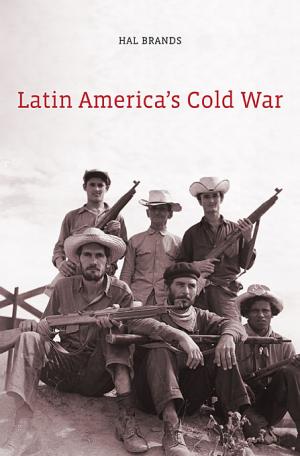In this new book, covering the entire period of the Cold War in Latin America, Hal Brands restores agency and initiative to Latin American actors, in the process demolishing many of the platitudes that have governed much of the U.S. foreign policy literature. Based on prodigious research in a dizzying array of U.S., Latin American, and even East German archives, Brands’s work advances a trenchant interpretation that cannot be ignored. He argues that the origins of the chaos and instability that ravaged Latin America during the Cold War owed less to U.S. interventionism than to the prevailing confluence of local, regional, and global dynamics.
Based on prodigious research in a dizzying array of U.S., Latin American, and even East German archives, Brands’s work advances a trenchant interpretation that cannot be ignored. He argues that the origins of the chaos and instability that ravaged Latin America during the Cold War owed less to U.S. interventionism than to the prevailing confluence of local, regional, and global dynamics.
Though the burgeoning Cold War atmosphere did little to discourage the power grabs of authoritarian leaders, their actions were determined less by U.S. prodding and more by elite backlash against the extension of middle- and working-class power that had occurred earlier in the 1940s. The democratic opening of the World War II period gave way to the consolidation of dictatorship during the late 1940s and early 1950s. The Cuban Revolution dramatically altered the landscape of Latin American politics, and here as well, Brands challenges the conventional wisdom concerning the Cuban-Soviet alliance. Castro’s turn toward the Soviets was driven by ideological and political considerations and occurred well before the disintegration in U.S.-Cuban relations. The real story of the 1960s is not, as most historians would have it, the extent of outside interference in Latin America, but rather the insurmountable difficulties that foreign interventionist powers confronted in attempting to expand their influence throughout the region. Brands locates the source of the intense conflicts of the 1970s in the widening ideological gulf between proponents of National Security Doctrine, who sought to eliminate all shadings of leftism, and advocates of liberation theology, which in its most extreme form embraced Marxism as a tool of social justice. The right-wing extremism of the 1970s was a backlash against the guerrilla violence and leftist radicalism of the 1960s.
The revolution in Nicaragua, far from being exemplary of hemispheric trends, in fact owed its success to four distinct though interrelated factors that combined to render the situation in that country unique. Not only was the Nicaraguan system deteriorating from the late 1960s, but the guerrillas had learned enough from the travails of their predecessors to earn substantial support from among the agrarian population. Moreover, the insurgents enjoyed significant foreign backing, not only from Moscow and Havana, but from other Latin American nations as well. Finally, the Carter administration, by means of a confused and incoherent foreign policy, effectively weakened or destroyed the traditional levers of U.S. influence in Nicaragua. The period of revolutionary ferment in 1980s Central America, when viewed through the lens of foreign intervention, reveals the meddling of several players; external intervention, writes Brands, “was not a one-sided affair.”
The wave of democratization that swept the region in the 1980s was rooted in many causes but had much to do with the relationship between dictators and the radical left. In Central America, the strength of the guerrilla insurgencies forced a measure of liberalization, while in South America the destruction of the extreme left deprived the military regimes of their legitimacy. The debt crises of the 1980s, however, were the most determinate factor in democratization, as they provided the pretext for prying open the economies of Latin America to neoliberal reforms. In the final analysis, the course of the Cold War in Latin America was shaped not only by the zero-sum struggle between Washington and Moscow for ideological and strategic dominance in the global south, but by conflicts over internal political dynamics and power structures, the extent – and more importantly, the limits – of U.S. influence, and the emergence of the Third World as both a political bloc and a rhetorical device. Brands has made an impressive and valuable contribution to our understanding of the Cold War in Latin America, and while his interpretation may spark controversy in certain academic circles, this reviewer fervently hopes that he will succeed in driving the debate forward, rather than prompting a rehash of hackneyed claims about the primary responsibility of the United States for Latin America’s problems.



